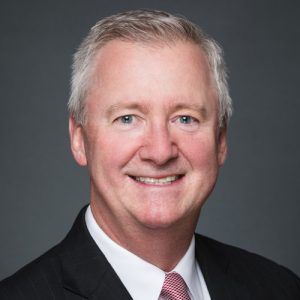If your responsibilities include your community bank’s bond portfolio, you’ve been confounded by several elements of its performance in the last 18 months. To the extent your portfolio has mortgage-backed securities (MBS) and government agency bonds, and the clear majority of all bonds owned by banks are in these two categories, they’ve certainly lost value since 2022. It is easy enough to put the “blame” on the Fed’s Federal Open Market Committee (FOMC), which as of this writing has taken overnight rates up fully 500 basis points (5%) since March of last year.
However, something else has occurred in period that’s contributed to the decline in bond prices: Yield spreads have actually widened during this time frame, which is highly unusual for a rising rate scenario. It has aggravated the market losses in community bank portfolios, which stood at around 8% as of June 30. About one-fifth of the market losses can be attributed to spread widening. What’s going on here?
Maybe it’s time to review why spreads widen and tighten, and why the various bond market sectors behave differently. If we can conclude with the notion that there are some opportunities for long-term benefit for your bank, all the better.
Spread Basics
First, a refresher on “spreads” in this context. It is the incremental yield for a collection of bonds, over and above the benchmarks. The benchmarks are comparable maturity Treasuries, which are presumed to be risk-free. (We don’t have time here to revisit the recent elaborate game of chicken over the debt ceiling. Notice I said “elaborate” and not “elegant.”)
Incremental spreads on bonds will tend to widen as rates fall, as lower yields accompany an economy that is losing momentum. This slowdown brings with it a higher likelihood of debt service problems, so lenders, including bond investors, ask for additional yield protection.
In 2023, there’s no slowdown, yet, and so the FOMC has now hiked overnight rates to their highest levels in 15 years in its quest to get inflation under control. And still, spreads are wider in virtually all bond sectors, so something different is in play. One factor is the Fed’s posturing related to its own balance sheet. Currently, the Fed is removing $95 billion per month from its own Treasury inventory. It has reserved the right to actually shed some of its $2.5 trillion MBS portfolio, but hasn’t yet.
Another difference this time around is the well-documented decline in excess liquidity on bank balance sheets, which I hasten to add is not the same thing as deposit runoff. Globally, the banking sector has gone from too much uninvested cash, to probably about right. Again, this has removed some demand from the fixed-income markets as the banking sector has purchased very few bonds in 2023.
Some Sectors Are Not Like Others
The callable agency market gives us a good example of how spreads are historically wide. Way back in 2021 (hyperbole), a bond that matured in three years and could be called in a year (“3/1 callable” in bond-speak) would have had a stated rate of interest of around 0.50%, which was about 10 measly basis points (0.10%) over the curve. Today, the “coupon” for the same bond would be around 5.50%, which has a full 1% spread over the three-year Treasury.
Similarly, popular mortgage securities have improved yields and spreads today over just a few months ago. A staple of community bank portfolios is a 15-year MBS issued by Fannie Mae or Freddie Mac. A “current coupon” pool has right at a 5% yield to maturity, again around 1% over the Treasury curve. A year ago? A current coupon would have been about 3.5%, and its spread around half of today’s.
Act Now; Thank You
It’s time to speak into the microphone and state that things can get worse before they get better. Which is to say, Treasury yields, and spreads, can continue to gap higher and wider before coming back in line. The Fed sure doesn’t sound like it’s finished with tightening, and even though banks are making use of wholesale funding sources to maintain liquidity levels, banks aren’t likely to become deluged with excess cash in the near future.
Nonetheless, we have a baseline of yields (Treasury curve) that is at a 15-year high, coupled with spreads that are nearly unprecedented for this stage of the rate cycle. This causes me to suggest that your portfolio will thank you later for bonds you purchase in mid-2023. If more yield is considered good, then it’s summertime, and the livin’ is easy.
Jim Reber is president and CEO of ICBA Securities, ICBA’s institutional, fixed-income broker-dealer for community banks. He can be reached at jreber@icbasecurities.com.







